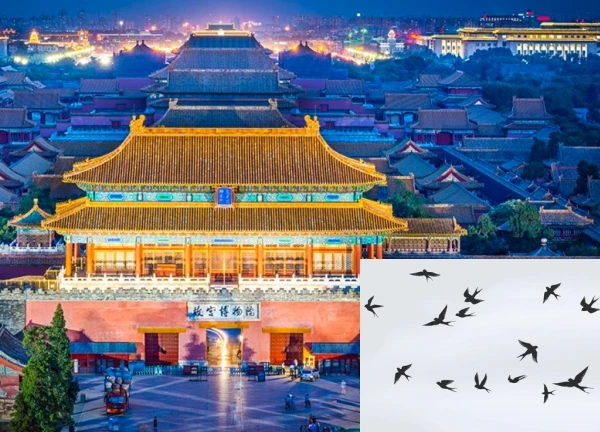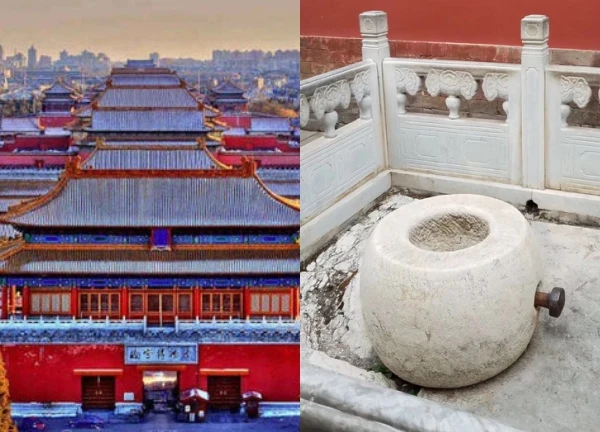Arriving late, not being able to worship the King in time, the officials in the past were punished, everyone was afraid to turn blue

3 | 0 Discuss | Share
Inside the majestic walls, American sociologist and photographer Sidney D. Gamble sneaked into the Forbidden City twice between 1917 and 1918 and captured precious historical moments.
The image of Tiananmen Gate in 1917 bears the mark of the times. Outside the gate is the daily life of the people, inside is the Forbidden City immersed in the dream of the last emperor, Pu Yi. The scene of weeds growing wildly in front of the Taihe Palace. After many eunuchs were expelled from the capital, the cleaning of the Forbidden City was neglected. Even the bird droppings on the roof were no longer cleaned, creating a desolate, desolate scene.
The photo was taken at Shenwumen, the northern gate of the Forbidden City. Behind this gate, the young emperor Puyi was always looking for an opportunity to restore the empire. In 1917, Puyi was helped by General Zhang Xun to restore the throne, but only for 12 short days before having to abdicate again.
On November 18, 1918, a grand military parade was held by the Beiyang government in front of the Taihe Palace. The event was to commemorate the Allied victory in World War I, a victory in which China also contributed, although not directly, by sending over 100,000 laborers to Europe and was exempted from the Geng-Zi indemnity.
The image of the President of the Republic of China in Beijing - Xu Shichang, who held office under the support of the Anhui warlords from October 10, 1918 to June 2, 1922. He was the one who gave the speech at this ceremony. In addition, the image of Ngo Mon Gate in 1918 with the flag of the Beiyang government hanging, is also one of the impressive images of the Forbidden City in the 20th century.
Amidst these historical upheavals, the lives of the common people continued. One photo shows Manchu women in traditional dress, believed to be relatives of the imperial family, in the Forbidden City. In another corner, an old lady with bound feet, elegantly dressed, smoking a cigarette, quietly observing the parade with an indifferent expression, probably a relative of a Qing Dynasty official.
Finally, there is the image of two guards guarding the palace gate, with their uniforms made of strong, durable material, but they are not equipped with military boots.
The Forbidden City, the imperial palace of the Ming and Qing dynasties in central Beijing, is the largest and best preserved complex of ancient wooden structures in the world.
The Forbidden City was built by the Yongle Emperor of the Ming Dynasty in 1406. After 13 years and the contribution of 100,000 laborers, the Forbidden City was completed in 1420 with a total area of 72 hectares, containing 70 large and small palaces and more than 9,000 houses.
The Forbidden City got its name because most commoners were forbidden from entering this walled imperial palace complex. Courtiers and even royalty were only allowed limited access, with only the reigning emperor able to go to any area of the Forbidden City at will.
2020 marks the 600th anniversary of the completion of the Forbidden City. Since then, over the past 604 years, the Forbidden City has been the site of many rare treasures collected by archaeologists and experts.
At present, the collection of the Palace Museum in the Forbidden City has reached more than 1.8 million artifacts, mainly collections of cultural relics, ancient buildings and books from the Ming and Qing Dynasties. All the historical relics inside the Forbidden City are incomparable. Anyone who visits the Forbidden City today can feel the history of hundreds of years in the most authentic way.
However, for the past 604 years, the 72 wells in the Forbidden City have never been touched, although experts estimate that they contain countless important treasures. These 72 ancient wells of different sizes are listed as key cultural relics that need to be protected.
In fact, according to archaeologists, there are indeed valuable artifacts in the ancient well of the Forbidden City. For example, in 1995, an official kiln from the Ming Dynasty was discovered in the Ximen Well of the Forbidden City. One can imagine the value of this official kiln from the Ming Dynasty. This discovery plays a huge role in the study of the history of the late Ming Dynasty.
This example is enough to prove that in the Forbidden City well, there are still many antiques and treasures containing historical information from the Ming and Qing dynasties. Some were intentionally kept inside, some accidentally fell in, no matter how, they all have great significance in historical research.
The shape of the ancient well in the Forbidden City is very beautiful, showing the wisdom and skillfulness of the craftsmen of the Ming Dynasty. The ancient wells have different diameters and shapes, which fully shows that they are more like decorative wells.
Even if there are cultural relics inside, they are still many years old. The ancient well is an important part of the Forbidden City, it is unreasonable to destroy the ancient well just to search for cultural relics inside the well. Not to mention, once the relics in the well (which are naturally protected) are salvaged, they will be damaged when exposed to air and sunlight. The ancient well in the Forbidden City is not for drinking but for fire prevention. Because the Forbidden City is basically a wooden structure, it is very easy to cause a fire, and water from a distance cannot put it out.
Mystery in the cold palace: Concubines go crazy or die, why is there still a prince born?  Hướng Dương20:22:40 23/11/2024The Cold Palace is known as the final destination of unfortunate or guilty concubines. So why did this place become the most haunted hell on earth in the Forbidden City, driving many people crazy?
Hướng Dương20:22:40 23/11/2024The Cold Palace is known as the final destination of unfortunate or guilty concubines. So why did this place become the most haunted hell on earth in the Forbidden City, driving many people crazy?

3 | 0 Discuss | Share

1 | 1 Discuss | Share

1 | 1 Discuss | Share

2 | 1 Discuss | Share

1 | 1 Discuss | Share

1 | 1 Discuss | Share

2 | 1 Discuss | Share

2 | 1 Discuss | Share

2 | 1 Discuss | Share

2 | 1 Discuss | Share

1 | 1 Discuss | Share

1 | 1 Discuss | Share




5 | 0 Discuss | Report